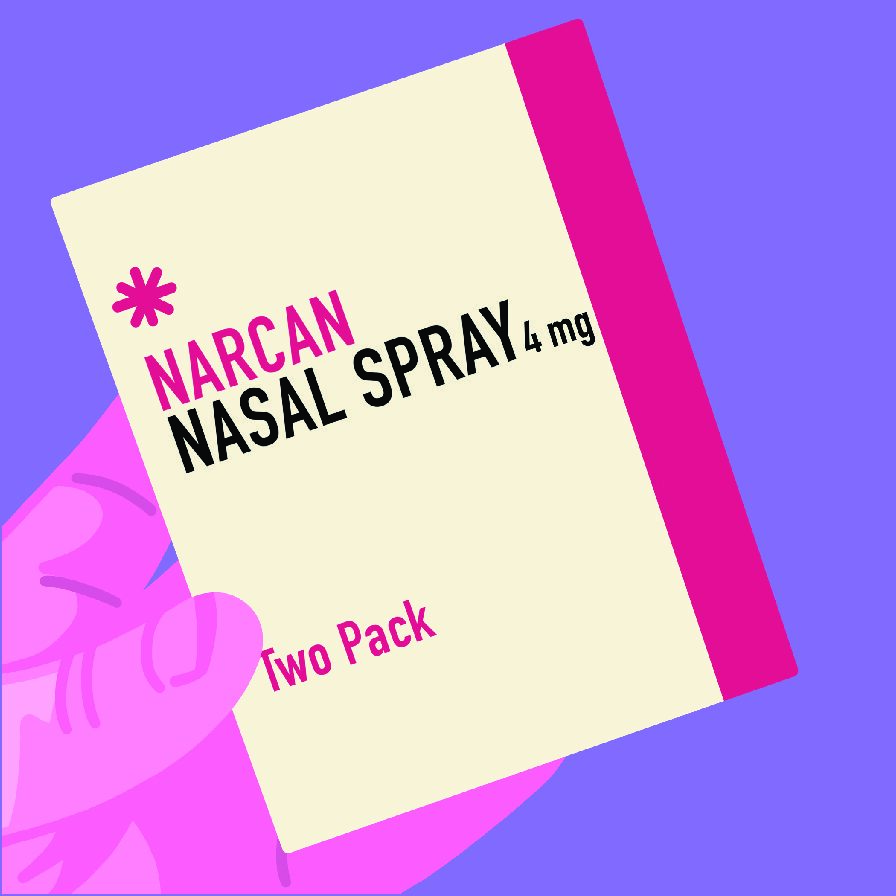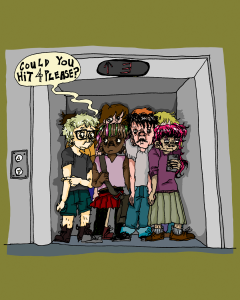OPINION: RAs should be Narcan trained
January 23, 2023
In 2021, there were an estimated 107,622 drug overdose deaths in the U.S. Overdoses involving opioids increased by about 20,000 from 2020-21. Each year, more people die from an overdose than all the casualties from the Vietnam War. Opioids come in many forms from prescription painkillers to illegal “street drugs” like fentanyl and heroin. They travel through the blood straight to the brain, triggering the release of endorphins. The absence of pain combined with a rewarding process causes the brain to create a memory of the environment and association when the drug was taken, tying cravings to experiences in the user’s life. As the use continues, people develop tolerance and dependency.
Opioids are prescribed cautiously these days, often after surgery or an accident to manage acute pain. Physicians are less than likely to refill or up a dose, but these precautions are just a bandaid on a broken leg. The susceptibility to addiction depends on the person’s genetics and environment. That being said, addiction can take place after only one use. Addiction is a progression that starts innocently and progresses over time. All of a sudden dependency can develop and lead to daily administering. This is often the point of no return without outside intervention. Some common withdrawal symptoms include nausea, insomnia, anxiety, racing heart and sweating. On paper, these may seem tolerable, but in real life, they consume the entire body. Withdrawals can last up to weeks depending on the situation but no matter the length, still undesirable. The only immediate relief of symptoms would be to use, hence the battle of sobriety.
Opioid addiction has a lot of negative stereotypes and judgments tied to it leaving people to participate in secret. Oftentimes the debut of their risky use is an overdose. Some signs of an overdose include small pupils, losing consciousness, slow shallow breathing, choking, limp body and pale/blue skin. This is where naloxone, also known as Narcan, comes in. This emergency medication attaches to opioid receptors reversing and blocking the effects of other opioids, which restores breathing back to normal within a few minutes. This will hold the patient over until EMS arrives. The sooner it is administered, the higher the rate of survival. If speed is the name of the game, how quickly could a medic get to the fourth floor of a dorm?
It can be as simple as wisdom teeth removal to send an adolescent into addiction. Narcotics soothe anxiety, make people happy and they temporarily relieve many of the ailments tied to mental disorders. The hydrocodone prescribed to you after a dental procedure may make it easier to socialize that day. Now the brain has an association between social anxiety and that painkiller. Depending on the severity of the pain, the pills are taken over the course of a few days further solidifying that association. It can be that easy. Now the brain not only thinks it needs this to survive, it also adjusts so that not having it is unbearable. The mental health of college-aged adults has been on the decline. As of 2021, approximately 44% of students report having experienced anxiety. Common mental health problems coupled with opiate naivety is a recipe for addiction no matter how ‘good’ the student is.
A resident assistant is responsible for creating a safe and comfortable environment for students. RAs undergo a series of training to be the best support they can for their floor and are the most reachable source available to students in an emergency. The average time for an ambulance to arrive is eight minutes but an RA can run down the hallway in one. If time is of the essence, then the closest trained adult should be the one to administer which would be the RA. With adequate training, every floor in each dorm could have overdose intervention resources. This could save lives.
By putting the time and resources into Narcan training, App State could open the doors for a more extensive conversation. Stigma is oftentimes what keeps people from seeking the help they deserve. Talking about addiction in small residential communities can lead to a break of social barriers that keep people from reaching out. By acknowledging the importance of these devices we are saying that these people’s lives are worth saving. This is the same as someone carrying an EpiPen. An increase in training will subsequently spread awareness, show the dangers of narcotics and keep people away in the first place. There are many recovering addicts that wish they knew what they were getting into before it was too late. Addiction is a disease of isolation. The bigger the conversation, the more abundant the resources, and the more lives are saved.
Editor’s note: Narcan is free in the student health center with a school ID. A list of on-campus harm reduction resources can be found here.













Katherine J Abrams • Jan 25, 2023 at 8:53 am
Students from my WRC 2001 writing class last semester started a petition to get a narcan vending machine installed in the library, which would dispense doses for free to students or staff/faculty who wanted to keep it with them in the event of an emergency. I think this would be a great item to combine with narcan training for RAs, etc.
Ethan • Jan 24, 2023 at 9:55 am
I don’t believe RAs are even allowed to adminster CPR as there are legal issues associated it. Dumb rule but I think that’s how it is. So being able to adminster Narcan may be a stretch.